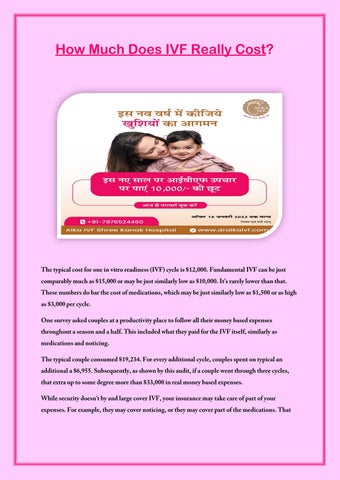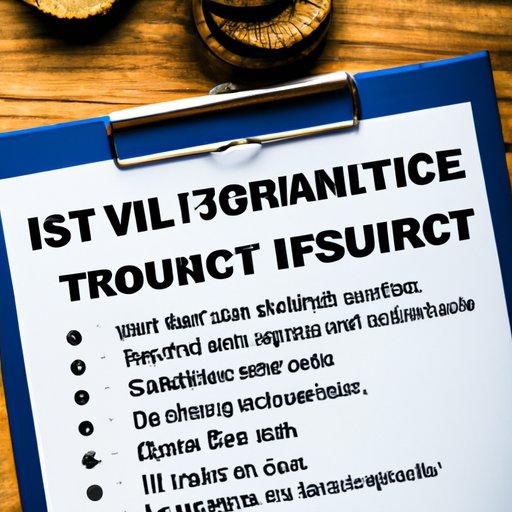
Is IVF Safe? Everything You Need to Know About In Vitro Fertilization
April 15, 2025
Who Was the First IVF Baby?
April 16, 2025How Much Does a Round of IVF Really Cost? Your Ultimate Guide to Understanding the Price Tag

How Much Does a Round of IVF Really Cost? Your Ultimate Guide to Understanding the Price Tag
In vitro fertilization (IVF) can feel like a lifeline for anyone dreaming of starting a family but facing fertility challenges. It’s a medical marvel that’s helped millions of people welcome babies into their lives. But let’s be real—IVF isn’t cheap, and figuring out the cost can feel like trying to solve a puzzle with missing pieces. If you’ve ever wondered, “How much is a round of IVF?” you’re not alone. It’s one of the most searched questions about fertility treatments, and for good reason. The price can vary wildly depending on where you live, what your body needs, and even the clinic you choose.
In this guide, we’re diving deep into the world of IVF costs. We’ll break down every step of the process, uncover hidden expenses, and share practical tips to help you plan your budget. Plus, we’ll explore some fresh angles—like how your lifestyle might affect the price and what’s new in 2025 that could save you money. Whether you’re just starting to research or you’re ready to take the plunge, this article is your go-to resource for understanding the full financial picture.
What’s Included in a “Round” of IVF? The Basics You Need to Know
A “round” of IVF—often called a cycle—is the complete process from start to finish, aiming to get you pregnant. It’s not just one appointment or procedure; it’s a series of steps that can take weeks or even months. Here’s what a typical cycle includes:
- Ovarian Stimulation: You’ll take medications to help your ovaries produce multiple eggs. This step can last about 10-14 days.
- Egg Retrieval: A doctor uses a small needle to collect the eggs from your ovaries. It’s a quick procedure, usually done under light sedation.
- Fertilization: In a lab, your eggs meet sperm (either your partner’s or a donor’s) to create embryos.
- Embryo Transfer: One or more embryos are placed into your uterus, hoping they’ll implant and grow into a pregnancy.
Sounds straightforward, right? But each of these steps comes with its own price tag, and that’s where things start to add up. On average, a single IVF cycle in the U.S. costs between $12,000 and $20,000 before extras like medications or special procedures. Let’s break it down further so you know exactly what you’re paying for.

The Big Breakdown: How Much Each Part of IVF Costs
IVF isn’t a one-size-fits-all deal. The cost depends on a bunch of factors, like your location, your clinic, and your unique medical needs. Here’s a detailed look at the main expenses you’ll encounter in a round of IVF, based on 2025 trends and data.
Ovarian Stimulation and Medications
This is where your journey begins—and where a big chunk of the cost kicks in. Medications like follicle-stimulating hormone (FSH) and luteinizing hormone (LH) encourage your ovaries to produce more eggs than they would naturally.
- Average Cost: $3,000 to $6,000 per cycle
- Why It Varies: Your age, weight, and hormone levels can affect how much medication you need. Older women (over 35) often need higher doses, which bumps up the price.
- Pro Tip: Ask your clinic about generic versions of these drugs. They can save you hundreds of dollars without sacrificing quality.
A 2023 study from the American Society for Reproductive Medicine found that medication costs account for about 30-40% of the total IVF price for most patients. That’s huge! And if your body doesn’t respond well to the first dose, you might need more, pushing the cost even higher.
Monitoring Appointments
While you’re on meds, your doctor will keep a close eye on your progress with ultrasounds and blood tests. These visits happen every few days during the stimulation phase.
- Average Cost: $500 to $1,500 (usually included in the base fee)
- What’s Involved: Checking egg growth and hormone levels to time the retrieval perfectly.
- Heads-Up: Some clinics charge extra for each visit, so double-check what’s covered.
Egg Retrieval
This is the big day! A doctor uses ultrasound guidance to collect your eggs. It’s an outpatient procedure, meaning you go home the same day.
- Average Cost: $2,000 to $5,000
- What Drives the Price: Anesthesia fees and the clinic’s equipment costs play a role. Bigger cities like New York or Los Angeles tend to charge more.
- Fun Fact: The average woman produces 10-15 eggs per cycle, but it only takes one good one to make a baby!
Fertilization and Lab Fees
Once your eggs are retrieved, they head to the lab. Scientists combine them with sperm to create embryos, either through standard mixing or a technique called ICSI (intracytoplasmic sperm injection), where a single sperm is injected into each egg.
- Average Cost: $1,000 to $3,000 (ICSI adds $1,000-$2,000 more)
- Why ICSI Costs More: It’s a precise, hands-on process that’s often used for male infertility issues, like low sperm count.
- Worth It? A 2024 study showed ICSI boosts fertilization rates by 15% in tough cases, so it might be a game-changer if you need it.
Embryo Transfer
The final step is placing the embryo(s) into your uterus. It’s a quick, painless procedure done with a thin tube.
- Average Cost: $1,000 to $2,000 (included in most base fees)
- Extra Costs: If you freeze leftover embryos for later, add $500-$1,000 for cryopreservation, plus $300-$600 per year for storage.
Here’s a quick table to sum it up:
| IVF Step | Average Cost | What’s Included |
|---|---|---|
| Medications | $3,000 – $6,000 | Hormones to grow eggs |
| Monitoring | $500 – $1,500 | Ultrasounds, blood tests |
| Egg Retrieval | $2,000 – $5,000 | Procedure + anesthesia |
| Fertilization (Lab) | $1,000 – $3,000 | Standard or ICSI lab work |
| Embryo Transfer | $1,000 – $2,000 | Placing embryo in uterus |
| Total Base Cost | $12,000 – $20,000 | Without extras like freezing or ICSI |
Hidden Costs You Might Not Expect
The base price of IVF is just the starting point. Plenty of sneaky expenses can creep up, catching you off guard if you’re not prepared. Here are some costs that don’t always make the headlines but can hit your wallet hard.
Pre-IVF Testing
Before you even start, your doctor will run tests to check your fertility health—think blood work, ultrasounds, and semen analysis for your partner.
- Cost: $250 to $1,000
- Why It Matters: These tests help tailor your treatment. Skipping them might save money upfront but could lead to a failed cycle later.
Frozen Embryo Transfers (FET)
If your first transfer doesn’t work or you want more kids later, you’ll use frozen embryos. Thawing and transferring them isn’t free.
- Cost: $3,000 to $6,000 per transfer
- Good News: FET success rates are climbing—up to 60% for women under 35, per a 2025 fertility report.
Genetic Testing (PGT)
Some folks opt to screen embryos for genetic issues before transfer. It’s called preimplantation genetic testing (PGT).
- Cost: $3,000 to $6,000 (plus biopsy fees)
- Who Needs It? Couples with a history of miscarriage or genetic disorders. It’s optional but can boost your odds of a healthy pregnancy.
Lifestyle Adjustments
This one’s rarely talked about, but your daily habits can affect IVF costs indirectly. Stress, poor diet, or smoking might lower your success rate, meaning more cycles—and more money.
- Example: A 2024 study found women who practiced yoga or meditation during IVF had a 10% higher success rate. A gym membership or mindfulness app ($10-$50/month) could be a small investment with big payoffs.
How Location Changes the Price Tag
Where you live can make a huge difference in what you pay for IVF. Clinics in big cities or high-cost states charge more because of overhead—like rent, staff salaries, and fancy equipment. Here’s a snapshot of how costs stack up across the U.S. in 2025:
- California (Los Angeles): $15,000 – $25,000 per cycle
- New York City: $14,000 – $22,000
- Texas (Houston): $12,000 – $18,000
- Midwest (Chicago): $12,000 – $20,000
- Rural Areas: $10,000 – $16,000
Why the gap? Urban clinics often have cutting-edge tech and top-tier doctors, but they pass those costs on to you. Smaller towns might offer lower prices, though you could sacrifice some bells and whistles. Traveling to a cheaper state is an option, but factor in flights, hotels, and time off work—it might not save you much.

Insurance and IVF: Will It Cover You?
Insurance is a wild card when it comes to IVF. Some states—like Illinois and New York—require employers to cover fertility treatments, but most don’t. Nationwide, only about 25% of insurance plans cover IVF, according to the National Conference of State Legislatures.
- What’s Covered (If You’re Lucky): Monitoring, meds, or part of the procedure.
- What’s Not: Add-ons like ICSI, PGT, or donor eggs are often out-of-pocket.
- Action Step: Call your insurance provider and ask, “What fertility benefits do I have?” Get it in writing to avoid surprises.
If you’re in a non-mandate state, don’t lose hope. Some employers offer fertility benefits as a perk—think tech giants like Google or Amazon. Check with HR to see if you’ve got hidden coverage.
Interactive Quiz: What’s Your IVF Budget?
Let’s make this fun! Answer these quick questions to estimate your potential IVF cost. Grab a pen or just keep a mental tally.
- Where do you live?
- A) Big city (like LA or NYC) = $20,000
- B) Medium city (like Chicago) = $15,000
- C) Small town = $12,000
- How old are you?
- A) Under 35 = Add $0 (standard meds)
- B) 35-40 = Add $1,000 (extra meds)
- C) Over 40 = Add $2,000 (higher doses)
- Do you need extras like ICSI or PGT?
- A) Yes, both = Add $5,000
- B) Just one = Add $2,000
- C) Nope = Add $0
Add up your total. That’s a rough ballpark for one cycle! Most people need 2-3 tries, so multiply that by 2 or 3 for a fuller picture. How’d you do? Share your number with a friend or in your head—did it surprise you?
Cutting Costs Without Cutting Corners
IVF doesn’t have to break the bank. There are smart ways to save money while still giving yourself the best shot at success. Here are some tried-and-true strategies, plus a few fresh ideas for 2025.
Go Mini-IVF
Mini-IVF uses lower doses of meds and aims for fewer—but higher-quality—eggs. It’s less intense on your body and your wallet.
- Cost: $5,000 to $8,000 per cycle
- Best For: Younger women or those with good ovarian reserve.
- Catch: Success rates can be slightly lower (around 20-30% vs. 40% for traditional IVF), but it’s a solid budget option.
Shop Around
Clinics vary in price, even in the same city. Call 3-5 places and ask for a detailed quote. Some offer discounts if you pay upfront or in cash.
- Example: A clinic in Texas dropped its base fee from $14,000 to $12,000 for cash patients in 2025.
Look Into Grants
Nonprofits like BabyQuest and the Tinina Q. Cade Foundation give out IVF grants—sometimes up to $10,000. Apply early; spots fill up fast.
- Tip: Write a heartfelt essay about your journey. It could tip the scales in your favor.
New in 2025: At-Home Monitoring
Some clinics now offer remote ultrasound devices you can use at home, cutting down on in-person visits. It’s not everywhere yet, but it could trim $500-$1,000 off your bill if your clinic’s on board.

The Emotional Price: What No One Talks About
Money isn’t the only cost of IVF. The emotional toll can be just as heavy, and it’s something you won’t find on a bill. The ups and downs of hope, disappointment, and waiting can wear you out. A 2024 study found that women who went through unsuccessful IVF cycles were 48% more likely to need mental health support within five years.
- Real Story: Sarah, a 34-year-old from Ohio, spent $30,000 on two cycles. “The second failure hit harder than the first,” she said. “I wish I’d budgeted for therapy too—it would’ve helped me cope.”
- Self-Care Tip: Set aside $50-$100 a month for things that lift your spirits, like a massage or a night out. It’s not frivolous—it’s fuel to keep going.
Success Rates and Costs: Are You Getting What You Pay For?
Here’s the million-dollar question: Does spending more guarantee a baby? Not exactly. Success rates depend more on your age and health than the clinic’s price tag. Here’s what the numbers say (based on 2025 CDC data):
- Under 35: 40-50% success per cycle
- 35-37: 30-40%
- 38-40: 20-30%
- Over 40: 10-15%
Spending $25,000 at a fancy clinic might feel reassuring, but a $12,000 cycle at a solid local spot could work just as well. Focus on the clinic’s live birth rate (not just pregnancy rate) and read reviews from real patients.
Poll Time: What’s Your Biggest IVF Worry?
We want to hear from you! Pick one and drop your vote in your mind (or chat about it with a friend):
- A) The cost is too high.
- B) I’m scared it won’t work.
- C) I don’t know where to start.
- D) All of the above!
What’d you pick? It’s totally normal to feel overwhelmed—IVF is a big deal. Let’s tackle your worries one step at a time.
Fresh Angles: Three Things You Won’t Find Everywhere
Most IVF cost articles stick to the basics—meds, procedures, insurance. But there’s more to the story. Here are three under-the-radar factors that could shape your budget and experience in 2025.
Your Diet Might Save (or Cost) You Thousands
What you eat before and during IVF can affect how many cycles you need. A 2024 study from Harvard Medical School found that women on a Mediterranean diet (think fish, veggies, and olive oil) had a 15% higher success rate per cycle. Fewer cycles = less money spent.
- Try This: Swap processed snacks for walnuts or salmon. It’s cheaper than another $15,000 round!
Climate and IVF: A New Connection
Here’s a wild one—air pollution might mess with your IVF odds. A 2025 study in Fertility and Sterility linked high pollution levels to a 5-10% drop in embryo quality. If you live in a smoggy city, you might need more tries.
- Fix It: Use an air purifier at home ($50-$200) or plan your cycle for cleaner months (check local air quality indexes).
Micro-IVF Loans Are Popping Up
Traditional IVF loans can have steep interest rates, but some banks in 2025 are rolling out micro-loans tailored for fertility. They cover one cycle at a time with lower fees—think 5% interest vs. 10-15%.
- Where to Look: Ask your clinic if they partner with lenders, or check online platforms like Prosper.
Your IVF Action Plan: Steps to Take Today
Ready to get started? Here’s a simple, step-by-step guide to figure out your IVF costs and make a plan that works for you.
- Call Your Insurance: Ask about fertility coverage. Write down every detail they give you.
- Research Clinics: Pick 3 near you and request a full cost breakdown. Compare base fees and extras.
- Budget for Meds: Assume $4,000 as a starting point, then adjust based on your age and needs.
- Build a Buffer: Add 20% to your estimate for surprises like extra tests or a second transfer.
- Explore Savings: Look into mini-IVF, grants, or lifestyle tweaks to stretch your dollars.
Here’s a checklist to keep you on track:
- ✔️ Contacted insurance
- ✔️ Got clinic quotes
- ✔️ Estimated meds
- ✔️ Added a cushion
- ❌ Skipped self-care (don’t do this!)
Wrapping It Up: Your IVF Journey Starts Here
So, how much is a round of IVF? It’s not a simple answer—$12,000 to $20,000 is the baseline, but your total could climb to $30,000 or more with extras. The good news? You’ve got options. From mini-IVF to grants to small lifestyle changes, there are ways to make it work without draining your life savings. And beyond the dollars, you’re investing in hope, resilience, and the chance to hold your baby someday.
Take a deep breath. You don’t have to figure it all out today. Start with one phone call, one question, one step. You’re not just budgeting for IVF—you’re building a future. What’s your next move?

